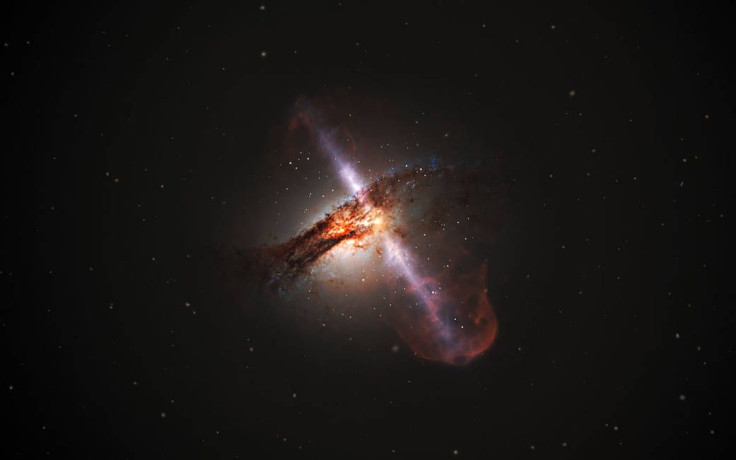Astronomers Capture Cosmic Jet From Galaxy Collision For The First Time

KEY POINTS
- Astronomers were able to photograph the jet of energy from a galactic collision
- The jet was produced by the intense energy of the galaxies' black holes
- Astronomers believe the stream of energy will become brighter and more powerful
For the first time, a team of astronomers was able to photograph the powerful jet of plasma and gas emitted by the collision of two massive galaxies. Based on their observations, it seems the emission from the galactic merger is just starting to get stronger.
The collision that the astronomers spotted involved the galaxy TXS 2116-077 and another spiral-shaped cosmic structure. They presented their findings in a new study published in the Astrophysical Journal.
Although galaxy collisions are fairly common, capturing the jet of cosmic material emanating from the merger as it happens is pretty rare. Fortunately for a group of international astronomers, they were able to observe and document the rare event.
According to the astronomers, both galaxies involved in the collision have black holes at their centers. These black holes can grow intensely and turn active galactic nuclei (AGN), which can emit more energy into the universe in one second than our sun will produce in its entire lifetime.
Sometimes, AGNs encounter the right conditions to shoot off jets of plasma. Most of the time, these jets are directed away from Earth, making them undetectable. However, TXS 2116-077’s collision happened in front of Earth, with its AGN shooting streams of plasma into the planet’s direction.
As the astronomers were observing the jet emitted by the galactic emission they noticed that it is not as bright as the other streams.
“Typically, a jet emits light that is so powerful we can't see the galaxy behind it,” astronomer Stefano Marchesi from the Observatory of Astrophysics and Space Science in Bologna said in a statement. “It's like trying to look at an object and someone points a bright flashlight into your eyes. All you can see is the flashlight. This jet is less powerful, so we can actually see the galaxy where it is born.”
Since they can still see the galaxies behind the jet stream, the astronomers theorized that the powerful beam is just starting to warm up. This means that it could get stronger and brighter in the future. Eventually, the galaxies behind the jet will no longer be visible due to its brightness.
© Copyright IBTimes 2025. All rights reserved.





















